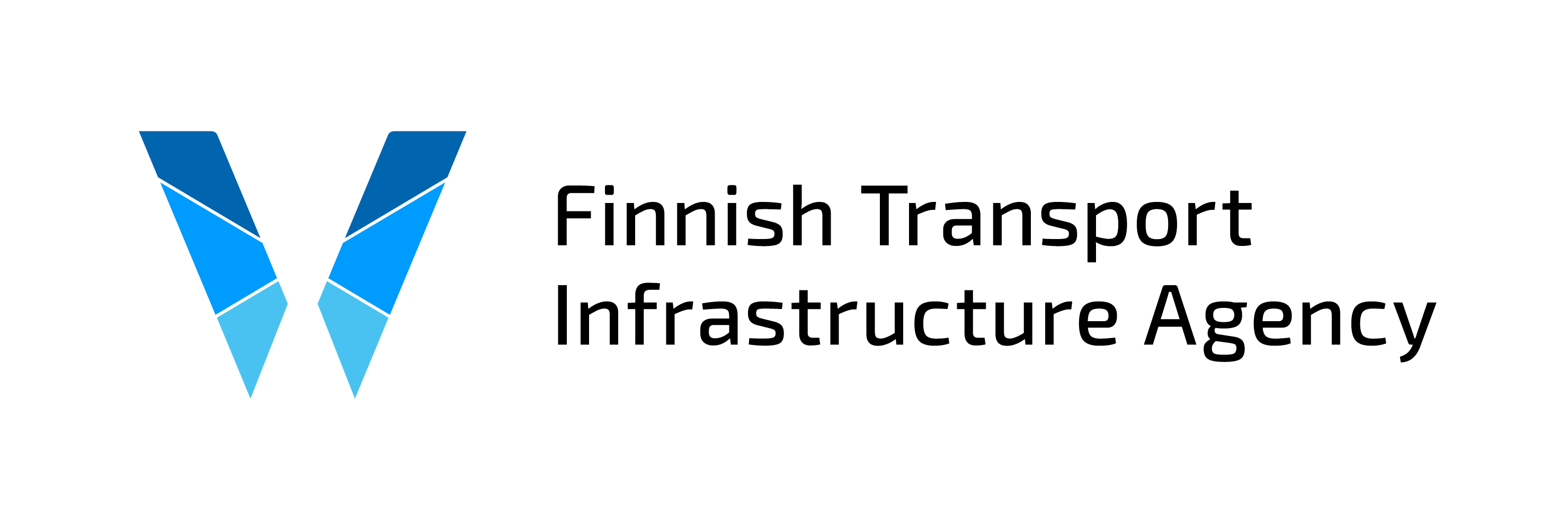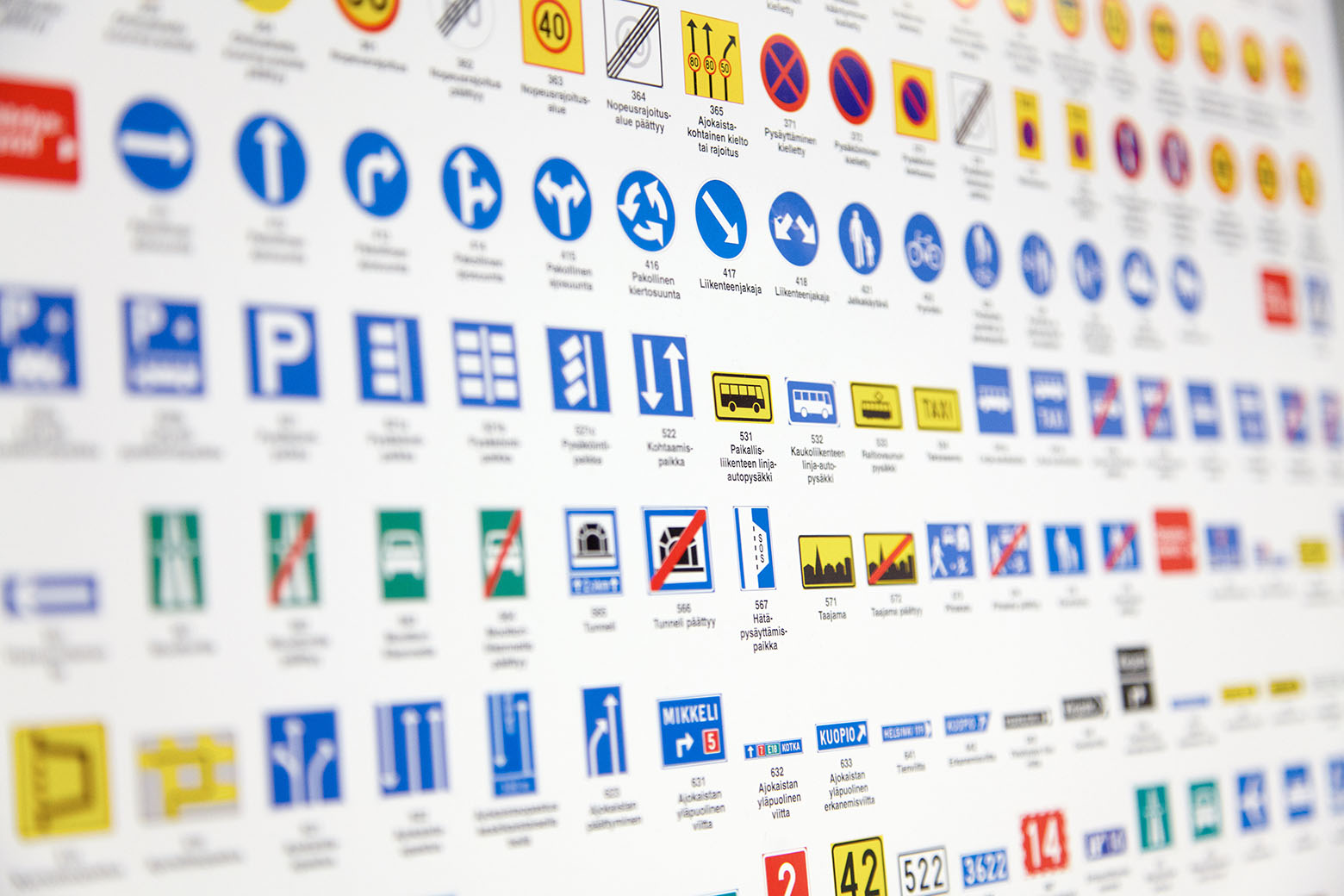What was the first traffic sign in Finland?
The first traffic sign in Finland was a triangular warning sign, painted in white, which was taken into use in the first part of the 1920s. The purpose of the traffic sign was to warn the road users of possible danger ahead.
From the beginning of the 1920s, traffic signs were needed, since motoring increased so rapidly. However, various prohibitory signs were already being used when people rode in horse-drawn carriages or vehicles to move around. For example, a sign prohibiting galloping on a bridge under penalty of a fine, was in use at the turn of the century.
A broader assortment of traffic signs turned up on Finnish roads in 1930. At that time, signs marking direction of traffic and speed limits were also included.
Which is the rarest traffic sign in Finland, and which is the most common?
The rarest traffic sign in Finland is most probably the additional panel number 862, which marks a crossing of a log transport road. Alternative parking signs are also very rare in Finland.
According to the estimation of Tuomas Österman, Expert on Traffic Signs and Markings at The Finnish Transport Agency, the most common traffic signs in Finland are the “give way” triangle and the blue bus stop sign. There are more than 200 different traffic signs and additional panels in use in Finland.
How long is the life expectancy of traffic signs in Finland’s tough weather conditions?
Traffic signs stay in serviceable condition for at least seven years, often much longer. Currently on the highways, there are many traffic signs older than 15 years that are still in reasonably good condition. The reflective surface of the traffic sign is the most vulnerable part, which degenerates the most over the years. The traffic sign base and post can last more than 30 years, unless someone hits them.
Where can traffic signs be placed, and who puts them there?
Anybody can own a traffic sign, but only the road infrastructure manager can place them along the road. Apart from that, permission from the municipal authority is needed to erect a traffic sign on a private road.
Nothing resembling a traffic sign should be placed where it is visible from the road. In other contexts, traffic sign graphics can be used freely, for example in magazines, on websites or in the home.
What are traffic signs made of?
Most traffic signs are made of aluminium or plywood. In the future, light composite materials might be used in traffic signs. The use of plastic has also been tested, but it proved too expensive. Almost all traffic signs have been manufactured in Finland.
What about the future of traffic signs?
In the next few years, new traffic signs will be introduced along with the reform of the Road Traffic Act. Moreover, the design of some old traffic signs will be modernised in connection with the reform. Consequently, there will be both old and new traffic signs simultaneously along the highways, as old signs are replaced only when they reach the end of their life cycle.
Typically in Finland, only a few new traffic signs at a time have been introduced. However, during the most recent introduction, in 2007, a greater number of new traffic signs were placed along the roads as service signs were introduced.
What will the future of traffic signs look like, for example, a hundred years from now? In the capacity of an expert on traffic signs and markings, Tuomas Österman does not think that traffic signs will become obsolete for a long time yet. At any rate, pedestrians and cyclists will still need traffic signs in the future. When it comes to motoring, the answer is not as straightforward.
If there are only autonomous cars on the roads after a hundred years, traffic signs will not necessarily be required, but it might take a long time to get to a point where traffic signs become dispensable. Currently, the autonomous cars now in use generally utilise image recognition, and so they are as reliant on traffic signs as people are. In practice, robot cars need a comprehensive database of the road network before traffic signs can be done away with.
Inquiries:
http://www.liikennevirasto.fi/web/en/road-network/traffic-signs
Tuomas Österman, Expert on Traffic Signs and Markings, Finnish Transport Agency,
Phone +358 29 534 3630
firstname.lastname(at)fta.fi
Jukka Hopeavuori, Expert on Traffic Signs and Markings, Finnish Transport Agency,
Phone +358 29 534 3047
firstname.lastname(at)fta.fi

